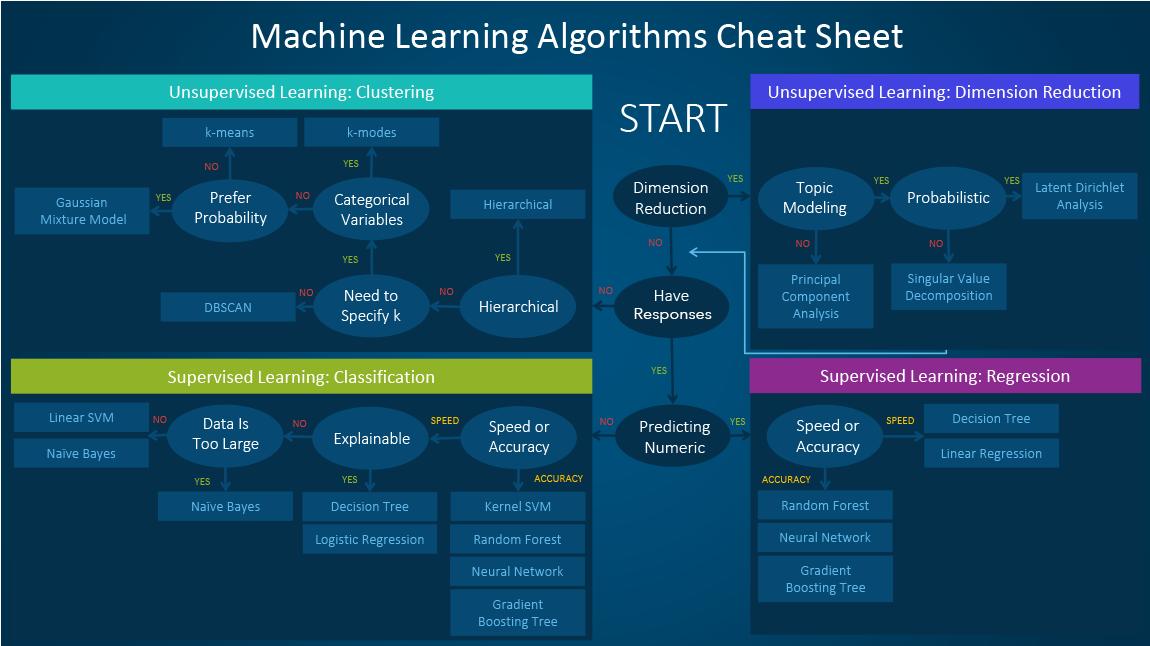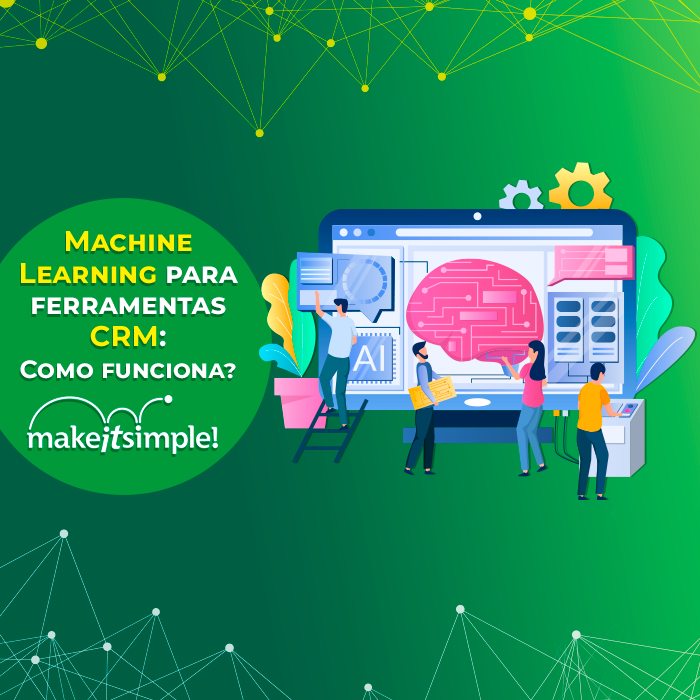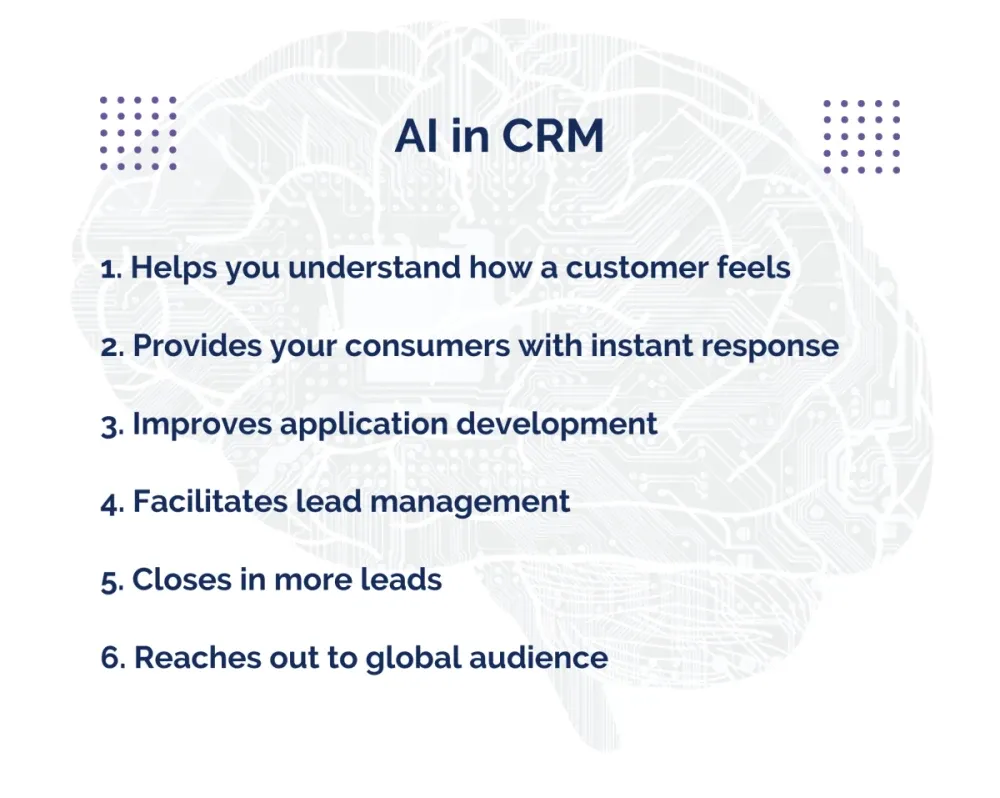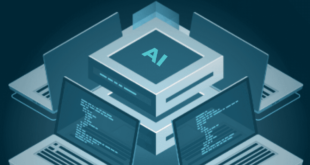Machine learning in CRM is revolutionizing how businesses interact with their customers. By leveraging powerful algorithms, companies can analyze vast amounts of customer data to gain valuable insights, predict future behaviors, and personalize interactions at an unprecedented scale. This allows for more efficient marketing campaigns, improved customer service, and ultimately, stronger customer relationships. This exploration delves into the practical applications and transformative potential of machine learning within the context of CRM systems.
From predicting customer churn and identifying high-value prospects to personalizing marketing efforts and automating customer service tasks, machine learning offers a wide array of benefits. We will examine various machine learning models, data management strategies, and ethical considerations associated with this rapidly evolving field, providing a comprehensive overview of its impact on modern CRM strategies.
Introduction to Machine Learning in CRM
Machine learning (ML) is rapidly transforming Customer Relationship Management (CRM) systems, moving beyond basic data storage and retrieval to offer intelligent insights and automation. By leveraging algorithms that learn from data, CRM systems can predict customer behavior, personalize interactions, and optimize sales processes, ultimately boosting efficiency and revenue. This integration is fundamentally changing how businesses understand and engage with their customers.Machine learning, at its core, involves algorithms that allow computer systems to learn from data without explicit programming.
In a CRM context, this means the system analyzes historical customer data—such as purchase history, website activity, and customer service interactions—to identify patterns and trends. These patterns are then used to predict future behavior, personalize marketing campaigns, and improve customer service responsiveness. The power of ML in CRM lies in its ability to automate tasks, personalize experiences, and provide actionable insights that would be impossible to achieve through manual analysis.
Benefits of Integrating Machine Learning into CRM Strategies
The integration of machine learning offers several key advantages for businesses. Improved customer segmentation allows for targeted marketing campaigns, leading to higher conversion rates and increased customer lifetime value. Predictive analytics enables proactive customer service, anticipating potential issues and addressing them before they escalate. Automated lead scoring prioritizes high-potential leads, freeing up sales teams to focus on the most promising opportunities.
Furthermore, ML enhances sales forecasting accuracy, allowing for better resource allocation and strategic planning. The overall result is a more efficient, data-driven approach to managing customer relationships.
Examples of Real-World CRM Systems that Leverage Machine Learning
Several prominent CRM platforms already incorporate machine learning capabilities. Salesforce Einstein, for example, uses AI and ML to provide predictive insights across various aspects of the CRM, including lead scoring, opportunity prediction, and customer churn prediction. Salesforce Einstein analyzes customer data to identify patterns and predict which leads are most likely to convert, allowing sales teams to prioritize their efforts.
Similarly, Microsoft Dynamics 365 uses ML to power its intelligent features, such as automated lead assignment, personalized recommendations, and predictive maintenance of customer service issues. These systems demonstrate the practical application of ML in enhancing CRM functionality and driving business outcomes. For instance, a company using Salesforce Einstein might see a significant increase in sales conversion rates due to the system’s ability to identify and prioritize high-potential leads.
A company utilizing Dynamics 365 might experience a reduction in customer service response times thanks to the system’s predictive maintenance capabilities, allowing for proactive issue resolution.
Predictive Capabilities of Machine Learning in CRM

Machine learning empowers Customer Relationship Management (CRM) systems with powerful predictive capabilities, transforming how businesses understand and interact with their customers. By analyzing vast amounts of customer data, machine learning algorithms identify patterns and trends that would be impossible for humans to discern manually, leading to more effective strategies for customer retention, sales growth, and overall business success. This predictive power allows for proactive, data-driven decision-making, ultimately improving customer experience and boosting profitability.
Predicting Customer Churn
Machine learning algorithms effectively predict customer churn by identifying patterns and behaviors associated with customers who are likely to cancel their subscriptions or cease engagement. These algorithms analyze various data points, including purchase history, customer service interactions, website activity, and demographic information. For instance, a decrease in purchase frequency combined with negative feedback in customer surveys might signal a high likelihood of churn.
By identifying these at-risk customers, businesses can proactively implement retention strategies, such as personalized offers or targeted support, to prevent churn. Common algorithms used include logistic regression, support vector machines, and survival analysis models. For example, a telecom company might use a churn prediction model to identify customers likely to switch providers based on their call volume, data usage, and billing history, allowing them to offer tailored retention plans.
Forecasting Sales Opportunities
Machine learning facilitates sales forecasting by analyzing historical sales data, market trends, and customer behavior to predict future sales performance. This allows sales teams to prioritize leads, allocate resources effectively, and set realistic sales targets. For example, a model might predict the likelihood of a specific lead converting into a sale based on factors such as their engagement with marketing materials, website visits, and previous interactions with the sales team.
This enables sales representatives to focus their efforts on the most promising leads, maximizing their efficiency and increasing conversion rates. Regression models, such as linear regression and random forests, are frequently employed for sales forecasting. A business-to-business (B2B) software company could use this to predict which leads are most likely to purchase their product based on company size, industry, and website activity, enabling the sales team to prioritize outreach efforts.
Identifying High-Value Customers
Machine learning helps identify high-value customers by analyzing their lifetime value (LTV), purchase frequency, and overall contribution to the business. This allows businesses to tailor their marketing and customer service strategies to these key customers, fostering loyalty and maximizing their long-term value. For instance, a model might identify customers who consistently make large purchases, refer new customers, or provide positive feedback as high-value.
By understanding the characteristics of these customers, businesses can develop targeted loyalty programs, personalized offers, and dedicated support channels to retain them. Clustering algorithms, such as k-means clustering, are often used to segment customers based on their value and behavior. An e-commerce retailer could use this to identify its most loyal and profitable customers, allowing them to offer exclusive discounts and personalized recommendations.
Comparison of Machine Learning Models for Prediction in CRM
| Model | Type | Strengths | Weaknesses |
|---|---|---|---|
| Logistic Regression | Classification | Simple, interpretable, efficient | Assumes linear relationship between features and outcome |
| Support Vector Machines (SVM) | Classification | Effective in high-dimensional spaces, versatile | Can be computationally expensive for large datasets |
| Random Forest | Classification & Regression | Robust to outliers, high accuracy | Can be difficult to interpret |
| Gradient Boosting Machines (GBM) | Classification & Regression | High accuracy, handles complex relationships | Prone to overfitting if not carefully tuned |
Personalization and Customer Segmentation with Machine Learning
Machine learning significantly enhances CRM capabilities by enabling highly personalized customer interactions and effective segmentation strategies. By analyzing vast amounts of customer data, machine learning algorithms identify patterns and insights that would be impossible to discern manually, leading to more targeted marketing, improved customer service, and ultimately, increased customer lifetime value. This allows businesses to move beyond broad generalizations and instead tailor their approaches to individual customer needs and preferences.
The power of machine learning lies in its ability to automate the complex processes of customer segmentation and personalization. Traditional methods often rely on manual categorization and broad demographic groupings, resulting in less precise targeting. Machine learning, however, leverages sophisticated algorithms to create dynamic segments based on a multitude of factors, including purchase history, website behavior, social media activity, and customer service interactions.
This granularity allows for much more effective and efficient targeting of marketing campaigns and personalized offers.
Customer Segmentation Strategies Using Machine Learning Algorithms
Effective customer segmentation requires a strategic approach. Machine learning algorithms, such as k-means clustering, hierarchical clustering, and DBSCAN, are commonly employed to group customers based on shared characteristics. For example, k-means clustering partitions customers into a pre-defined number of clusters, while hierarchical clustering builds a hierarchy of clusters, allowing for a more nuanced understanding of customer groupings. DBSCAN identifies clusters based on density, useful for identifying niche segments.
The choice of algorithm depends on the specific data and business objectives. Feature engineering, the process of selecting and transforming relevant variables, is crucial for successful segmentation. Features might include demographics, purchase behavior, website engagement metrics, and customer service interactions. After applying an algorithm, the resulting segments can be further analyzed to understand their unique characteristics and develop targeted strategies.
Improving Personalized Marketing Campaigns with Machine Learning
Machine learning dramatically improves personalized marketing campaigns by enabling highly targeted messaging and offer optimization. By analyzing individual customer profiles, machine learning algorithms predict which products or services a customer is most likely to be interested in. This allows businesses to deliver highly relevant content and offers through various channels, such as email, social media, and website notifications. For example, an e-commerce platform could use machine learning to recommend products based on a customer’s past purchases and browsing history.
A financial institution might use machine learning to personalize investment advice based on a customer’s risk tolerance and financial goals. The result is a more engaging and effective marketing strategy that resonates with individual customers and leads to increased conversion rates.
Creating Customized Customer Experiences Using Machine Learning
Machine learning facilitates the creation of seamless and personalized customer experiences across all touchpoints. By analyzing customer interactions, machine learning algorithms can identify patterns and predict future behavior. This allows businesses to proactively address customer needs and personalize their interactions. For example, a customer service chatbot powered by machine learning can understand customer inquiries and provide instant support, while a recommendation engine can suggest relevant products or services based on a customer’s current context.
A streaming service might use machine learning to suggest shows based on a user’s viewing history and preferences, improving user engagement and satisfaction. This proactive and personalized approach leads to increased customer loyalty and advocacy.
Enhancing Customer Journey Mapping with Machine Learning
Machine learning significantly enhances customer journey mapping by providing a deeper understanding of customer behavior and preferences. By analyzing data from various touchpoints, such as website analytics, CRM systems, and social media, machine learning algorithms can identify pain points, bottlenecks, and opportunities for improvement in the customer journey. For instance, a company might use machine learning to identify which steps in the online purchase process are causing customers to abandon their carts.
This information can then be used to optimize the process and improve conversion rates. By visualizing the customer journey with the insights provided by machine learning, businesses can create more effective and efficient customer experiences. The analysis reveals patterns and trends that would be difficult to identify through manual analysis, leading to data-driven improvements in customer satisfaction and loyalty.
Improving Customer Service with Machine Learning in CRM
Integrating machine learning (ML) into CRM systems significantly enhances customer service capabilities, leading to increased efficiency, improved response times, and heightened customer satisfaction. By automating repetitive tasks and providing intelligent insights, ML empowers support teams to focus on complex issues and build stronger customer relationships.
Automating Customer Service Tasks with Machine Learning
Machine learning plays a crucial role in automating various customer service tasks, freeing up human agents to handle more intricate requests. This automation encompasses a range of functions, from routing inquiries to the most appropriate agent based on skillset and issue type, to automatically resolving simple issues like password resets or order status updates. For instance, an ML model trained on historical data can analyze incoming emails or chat messages, identify the customer’s intent, and automatically categorize and prioritize the request.
This automated triage system ensures faster response times and a more efficient allocation of resources. Furthermore, ML can automate the generation of personalized responses to frequently asked questions, reducing the workload on human agents.
Improving Response Times in Customer Support through Machine Learning
Machine learning techniques significantly contribute to faster response times in customer support. Predictive models, trained on past interaction data, can forecast potential service disruptions or surges in customer inquiries. This allows support teams to proactively scale their resources, ensuring sufficient agents are available to handle the increased volume. Moreover, ML-powered chatbots can provide immediate assistance to customers, addressing their queries 24/7, thereby minimizing wait times.
For example, a company experiencing a surge in calls after a product launch could leverage predictive modeling to anticipate the increase and adjust staffing accordingly, avoiding long wait times and frustrated customers. Real-time sentiment analysis can also flag urgent issues, allowing agents to prioritize customers expressing high levels of frustration or dissatisfaction.
Utilizing Machine Learning in Creating Chatbots for Customer Interaction, Machine learning in CRM
Machine learning is fundamental to the development of sophisticated chatbots capable of engaging in natural and meaningful conversations with customers. Natural Language Processing (NLP) algorithms enable chatbots to understand and respond to customer queries in a human-like manner. These chatbots can handle a wide range of tasks, from answering simple questions about products and services to providing personalized recommendations and resolving minor technical issues.
For instance, a chatbot trained on a company’s product catalog can answer questions about specific features, pricing, and availability. Furthermore, machine learning algorithms allow chatbots to continuously learn and improve their performance based on past interactions, enhancing their ability to understand and respond to a wider range of customer queries. The integration of sentiment analysis allows chatbots to identify and respond appropriately to frustrated or angry customers, preventing escalation and maintaining a positive customer experience.
Challenges in Implementing Machine Learning for Customer Service
Despite the numerous benefits, implementing machine learning for customer service presents certain challenges. Data quality is paramount; inaccurate or incomplete data can lead to flawed models and ineffective solutions. The need for substantial data sets to train effective ML models can also be a significant hurdle, particularly for smaller businesses. Ensuring data privacy and security is another crucial aspect, as sensitive customer information is often involved.
Furthermore, maintaining and updating ML models requires ongoing effort and expertise. Finally, striking the right balance between automation and human interaction is essential; overly automated systems can lead to impersonal experiences and customer dissatisfaction. Addressing these challenges requires careful planning, investment in infrastructure and expertise, and a focus on continuous improvement.
Data Management and Analysis for Machine Learning in CRM

Effective data management and analysis are the cornerstones of successful machine learning implementation in CRM systems. The quality, relevance, and security of your data directly impact the accuracy and reliability of your predictive models, ultimately influencing customer interactions and business outcomes. This section will explore crucial aspects of data handling within a machine learning CRM environment.
A robust data strategy is essential for leveraging the full potential of machine learning in CRM. This involves careful planning and execution across data preprocessing, quality assurance, privacy, and visualization of key performance indicators (KPIs).
Data Preprocessing and Cleaning
Data preprocessing involves transforming raw data into a usable format for machine learning algorithms. This crucial step significantly impacts model accuracy. The process typically includes handling missing values (e.g., imputation using mean, median, or mode; or removal of rows/columns with excessive missing data), outlier detection and treatment (e.g., capping, winsorizing, or removal), data transformation (e.g., standardization, normalization, encoding categorical variables using one-hot encoding or label encoding), and feature engineering (creating new features from existing ones to improve model performance).
For example, combining customer purchase history and website browsing data might create a new feature indicating customer engagement level. Thorough data cleaning ensures the removal of inconsistencies, duplicates, and errors, improving the reliability of the model.
Importance of Data Quality in Achieving Accurate Predictions
High-quality data is paramount for accurate predictions. Inaccurate, incomplete, or inconsistent data can lead to biased models, resulting in flawed predictions and poor decision-making. For instance, if customer purchase data contains errors in pricing or product identification, the model predicting future purchases will likely be inaccurate. Similarly, incomplete customer profile information (missing demographics, contact details) will limit the model’s ability to personalize interactions effectively.
Data quality directly correlates with the reliability and usefulness of insights derived from machine learning models. Investing in data validation and cleansing processes is crucial to ensure the accuracy and trustworthiness of predictive analytics.
Data Privacy and Security in Machine Learning CRM Environments
Protecting customer data is crucial, especially within a machine learning context. Implementing robust security measures is essential to comply with data privacy regulations (e.g., GDPR, CCPA). This includes data encryption both in transit and at rest, access control mechanisms to restrict data access to authorized personnel only, regular security audits to identify and address vulnerabilities, and anonymization or pseudonymization techniques to protect customer identities while preserving data utility for model training.
For example, replacing customer names with unique identifiers helps maintain privacy while still allowing for analysis of purchasing patterns. A comprehensive data governance framework is vital for ensuring compliance and building customer trust.
Visualizing Key Performance Indicators (KPIs) Related to Machine Learning in CRM
Visualizing KPIs allows for effective monitoring and evaluation of machine learning models’ performance. Several chart types can effectively represent different aspects of model performance.
For example, a line chart can track the model’s accuracy over time, showing trends and identifying potential areas for improvement. The x-axis would represent time (e.g., weeks, months), and the y-axis would represent the model’s accuracy (e.g., percentage). A bar chart can compare the performance of different machine learning models, with each bar representing a model and its height representing a chosen metric (e.g., precision, recall, F1-score).
A pie chart could visually represent the distribution of customer segments identified by the machine learning model, showing the proportion of customers belonging to each segment. Finally, a scatter plot could be used to visualize the relationship between two variables, such as customer lifetime value and predicted churn probability, identifying patterns and correlations.
Future Trends and Challenges: Machine Learning In CRM

The integration of machine learning (ML) into CRM systems is rapidly evolving, promising significant advancements in customer relationship management. However, this progress is not without its hurdles. Understanding both the exciting possibilities and the potential pitfalls is crucial for successful implementation and responsible use. This section explores emerging trends, challenges, and ethical considerations associated with the future of ML in CRM.
The field of machine learning is constantly evolving, leading to new applications and capabilities within CRM. Simultaneously, concerns regarding data privacy, algorithmic bias, and the overall impact on human interaction necessitate careful consideration. Navigating this complex landscape requires a proactive approach, balancing innovation with responsible development and deployment.
Emerging Trends in Machine Learning Applications within CRM Systems
The next generation of CRM systems will likely leverage more sophisticated ML techniques. We can anticipate a rise in the use of deep learning for more nuanced customer understanding, natural language processing (NLP) for enhanced chatbots and sentiment analysis, and the increasing integration of ML with other technologies like blockchain for secure data management and improved transparency. For instance, deep learning models could analyze complex customer interactions across multiple channels to predict churn with greater accuracy than current methods.
The use of NLP in chatbots is already improving customer service response times and efficiency, allowing for 24/7 availability and personalized interactions.
Challenges and Limitations in the Widespread Adoption of Machine Learning in CRM
Several factors hinder the widespread adoption of ML in CRM. Data quality remains a significant obstacle; inaccurate, incomplete, or biased data will lead to flawed predictions and ineffective strategies. Furthermore, the technical expertise required for implementation and maintenance can be a barrier for smaller organizations. The cost of implementing and maintaining sophisticated ML systems, including the necessary hardware and skilled personnel, can also be prohibitive.
Finally, the integration of ML into existing CRM systems can be complex and time-consuming, requiring significant investment in infrastructure and training. For example, a company might struggle to integrate a new ML-powered customer segmentation tool with their legacy CRM system, leading to data silos and inefficiencies.
Ethical Considerations Associated with the Use of Machine Learning in CRM
The ethical implications of using ML in CRM are substantial. Algorithmic bias, where a system unfairly discriminates against certain groups, is a significant concern. For instance, a loan application system trained on biased historical data might unfairly deny loans to individuals from specific demographic groups. Data privacy is another key issue; the collection and use of customer data must comply with relevant regulations and ethical guidelines.
Transparency in how ML models make decisions is also crucial; customers have a right to understand how their data is used and the rationale behind decisions that affect them. Finally, the potential for job displacement due to automation needs careful consideration and mitigation strategies.
Potential Future Developments in Machine Learning for CRM
The following points represent potential future developments in this area:
The advancements in machine learning are constantly reshaping the landscape of CRM. These potential developments highlight the dynamic and evolving nature of this field and its potential impact on customer relationship management.
- Hyper-personalization: Creating truly individualized customer experiences based on real-time data analysis and predictive modeling.
- Predictive Customer Service: Anticipating customer needs and proactively addressing potential issues before they arise.
- Enhanced Sales Forecasting: More accurate sales predictions based on advanced ML algorithms and real-time market data.
- AI-Powered Sales Assistants: Intelligent assistants that provide real-time support and guidance to sales teams.
- Automated Customer Onboarding: Streamlining the onboarding process with AI-driven automation.
The integration of machine learning into CRM systems marks a significant advancement in customer relationship management. By harnessing the power of predictive analytics and personalized experiences, businesses can foster deeper connections with their customers, improve operational efficiency, and drive significant growth. While challenges remain regarding data privacy and ethical considerations, the future of CRM is undeniably intertwined with the continued development and implementation of machine learning technologies.
The insights gained through this analysis equip businesses to navigate this evolving landscape and leverage machine learning for a competitive advantage.
FAQ Guide
What types of data are most useful for machine learning in CRM?
Data including customer demographics, purchase history, website activity, customer service interactions, and social media engagement are highly valuable.
How can I ensure data privacy and security when using machine learning in CRM?
Implement robust data encryption, access control measures, and comply with relevant data privacy regulations (like GDPR or CCPA).
What are the common challenges in implementing machine learning in CRM?
Challenges include data quality issues, lack of skilled personnel, integration complexities, and the need for significant upfront investment.
What is the return on investment (ROI) for implementing machine learning in CRM?
ROI varies greatly depending on implementation and business goals but can include increased sales, reduced customer churn, and improved customer satisfaction.
